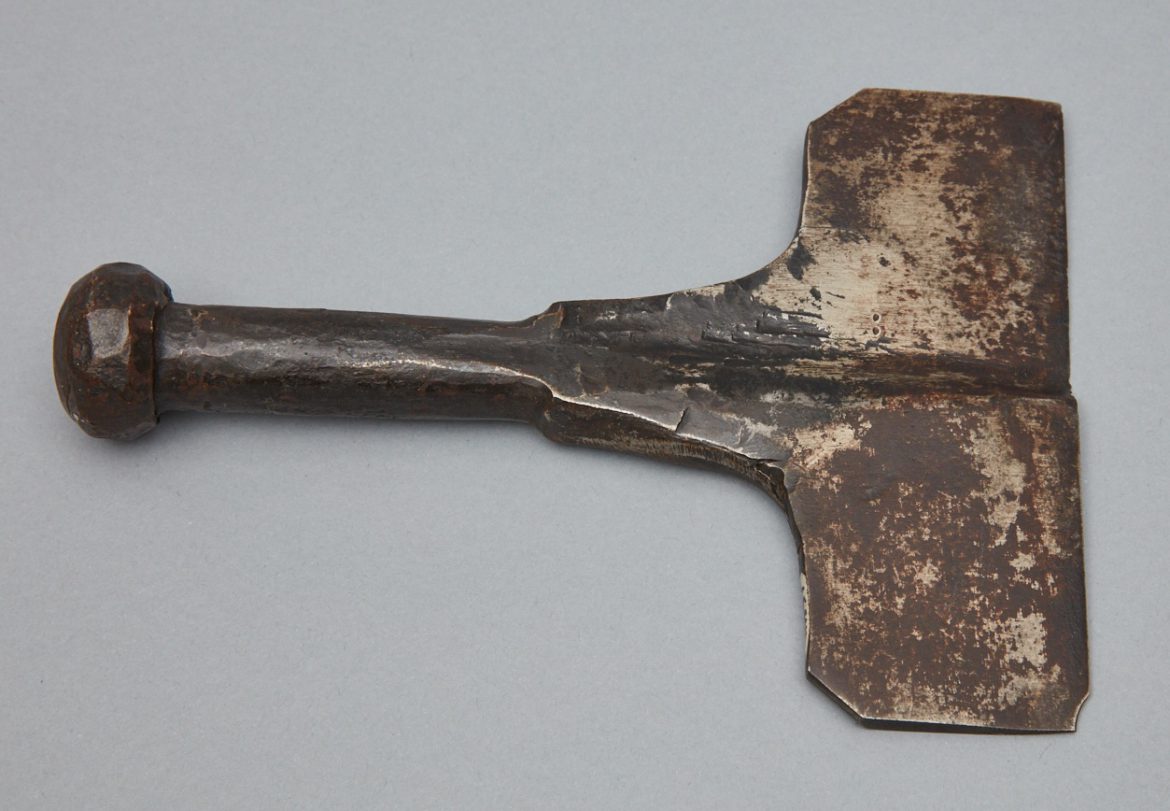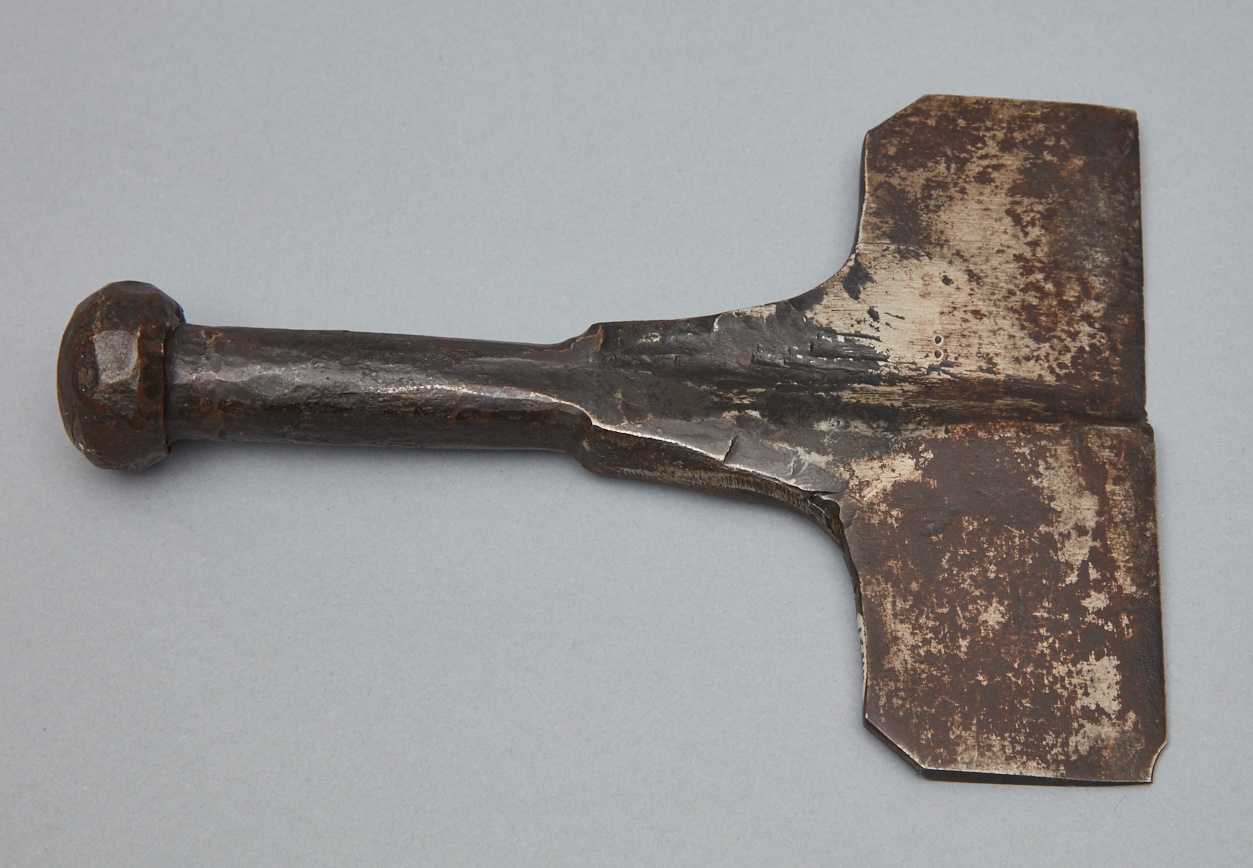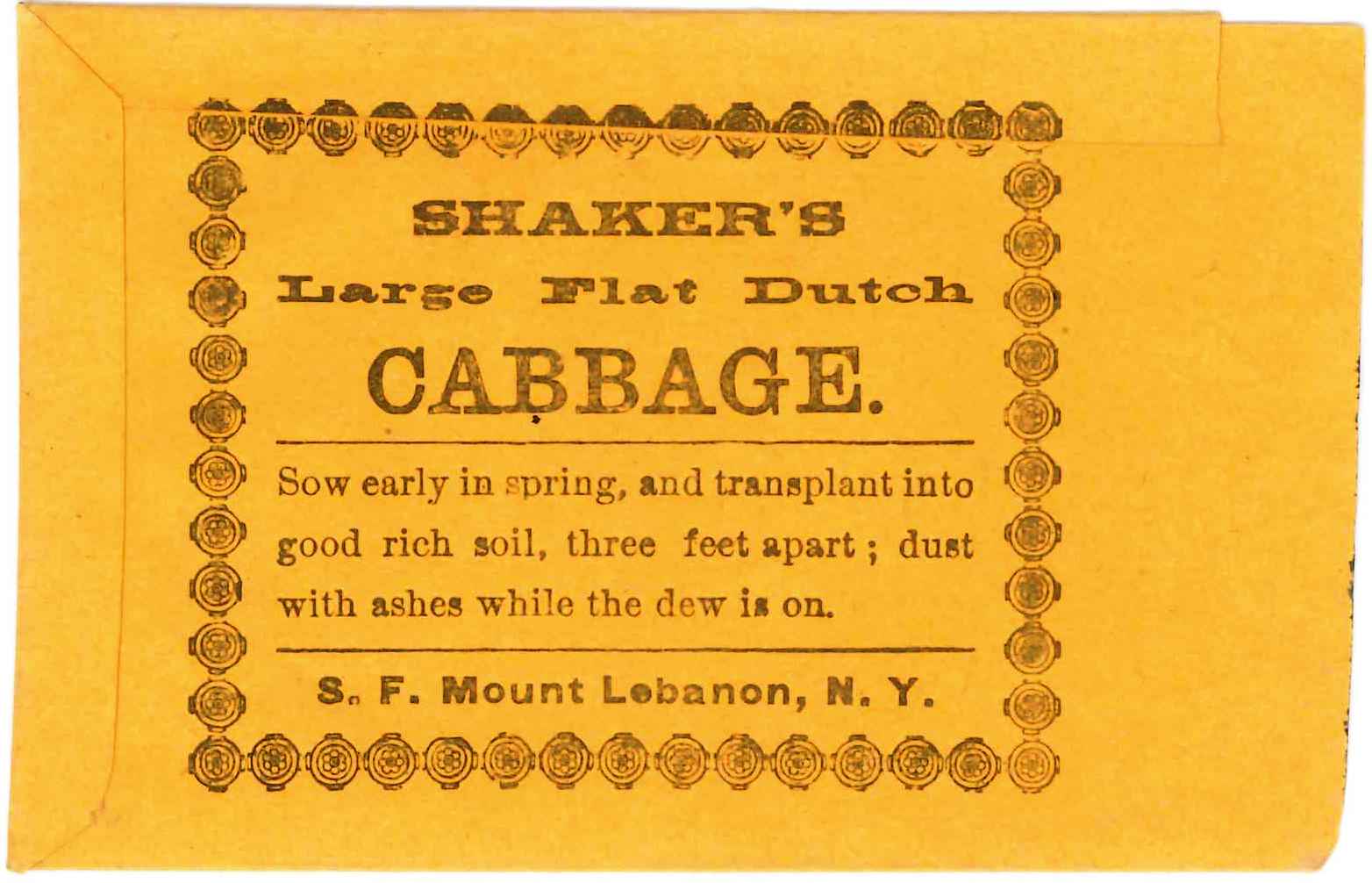
Seed Bag Chisel, Church Family, Mount Lebanon, NY, ca. 1830, Shaker Museum | Mount Lebanon: 1950.1642.1. John Mulligan, photographer.
In February 1835 Elder Freegift Wells at the Shaker community at Watervliet, New York, finished cutting out paper seed bags for the season. These bags, or “seed papers” as the Shakers called them, were soon filled with the 1834 crop of garden seeds and offered for sale through merchants who agreed to sell them on commission. That year Elder Freegift “cut 100500 bags besides near 200 large bags for […]
In February 1835 Elder Freegift Wells at the Shaker community at Watervliet, New York, finished cutting out paper seed bags for the season. These bags, or “seed papers” as the Shakers called them, were soon filled with the 1834 crop of garden seeds and offered for sale through merchants who agreed to sell them on commission. That year Elder Freegift “cut 100500 bags besides near 200 large bags for pounds & half pounds.” While that number may seem staggeringly large, at Mount Lebanon between 1834 and 1840 nearly one million bags were cut, printed, and filled with seed. That was about twice Elder Freegift’s production. The raising and selling of garden seeds had become very profitable for a number of Shaker communities.
During the “Period of Mother’s Work” in the late 1830s and 1840s, in which many Shakers received communications from the spirit world, the spirit of Father Joseph Meacham cautioned Believers that the garden seed business was leading Shakers in a dangerous direction. He said in October, 1841:
A seed garden for sale is not the thing for the first Church on Earth, you will never gain the riches of heaven in this way. Yea, … to me this great garden [i.e., the Church Family’s seed garden] is a garden of pomp, pride and worldly superfluities, not the garden of heaven….you have missed the matter in thinking you can get an easier living by raising garden seeds to sell, than by your other trades and manufactures, which Father planted for the honor and beauty of Zion, and which you have let run down, and some entirely run out…. But is it rather because the rising generation are running to machinery, conveniences, superfluities, pomp, pride, aspiring for extensive trades, and much money making. I can tell you, there is no promise in a great deal of cash.
Father Joseph Meacham, spirit, “Recorded October 19th & 21, 1841,” Western Reserve Historical Society, Cleveland, OH, Shaker Collection, mss. no., VIII:B131.
Although Father Joseph recommended that the Shakers of the time go back as much as they could to earlier trades – “the making of Tubs, Pails, Brooms, Boxes, Brushes, Dippers, Whiplashes, Leather, Wheels and Reels,… which are plain and neat, representing the people of God,” (1) the seed business continued to be an increasingly profitable business through the Civil War in a number of Shaker communities. At that time, non-Shaker seed merchants began taking an increasing cut out of the Shakers’ “easier living.” Many of the Shaker seed businesses never recovered.

Seed Bag Chisel, Church Family, Mount Lebanon, NY, ca. 1830, Shaker Museum | Mount Lebanon: 1950.1642.1. John Mulligan, photographer.
Some of the success of the business should be credited to small inventions such as the seed bag chisels featured here. These examples from the Shaker Museum | Mount Lebanon collection made an important contribution to saving labor and speeding up production. The Shakers figured out that it was quicker to cut a number of pieces of paper to a given shape with the whack of a chisel than to try and cut them out individually with knife or scissors.

Seed Bag Chisel, Church Family, Mount Lebanon, NY, 1866, Shaker Museum | Mount Lebanon: 1950.3085.1. John Mulligan, photographer.
These bag chisels were designed and made by the Shakers. In a journal kept by Elder Freegift Wells at Watervliet, New York, the preparation for cutting bags was recorded in some detail. In December 1834, Elder Freegift and his apprentice and nephew Thomas Wells were “sawing out a large white pine block to cut seed bags upon.” In January the next year Elder Freegift turned “some screws and legs for the cutting block,” and in a few more days he had “got the new cutting block ready to use.” The next day he noted that he was in his shop, “grinding up chisels for cutting seed bags &c.” and after cutting out around 5,000 bags over the next few days he began “grinding on a new bag knife [i.e., chisel].” It is not known if the first one needed improving or if it worked so well he made another one to further speed up production.
The seed bag chisel makes a cut with a jog in it. When the cut seed paper is folded at the proper place near the middle it leaves tabs on the three open sides. When two of these tabs are folded and glued the blank becomes a bag with one open side ready to receive seeds and to have the final tab glued and folded closed. The illustration of how to make a seed bag shows one way seed bags were made.

Shaker’s Large Flat Dutch Cabbage Seed Bag, Second Family, Mount Lebanon, NY, ca. 1860s, Shaker Museum | Mount Lebanon: 1957.9348.1.
It is not known whether the Shakers cut the seed bags to size before or after printing them. It is likely that seed bags were cut and pasted on two sides – then printed as needed – then filled and sealed on the third side. It would have been quite efficient to cut seed bag blanks prior to printing. A pile of long strips of paper of the proper width to make the desired size bag could have been laid out on the cutting block and then the chisel used to cut them at the proper set intervals to create the folding tabs. A bag made for Large Flat Dutch Cabbage at the Second Family at Mount Lebanon in the collection of the Shaker Museum | Mount Lebanon clearly indicates that bags were cut and pasted prior to printing – this bag was printed on the wrong side with the decorative border overlapping a folded edge, something that could not happen if the bag blanks were printed prior to folding. On the other hand the Japan Musk Melon bag most likely produced by the Church Family was printed prior to folding. This example could have been printed as a single bag blank or could have been printed in a strip of bag blanks and cut at the appropriate place with the seed bag chisel. It appears that all options were used.

Japan Musk Melon Seed Bag, Mount Lebanon, NY, Ca. 1860s